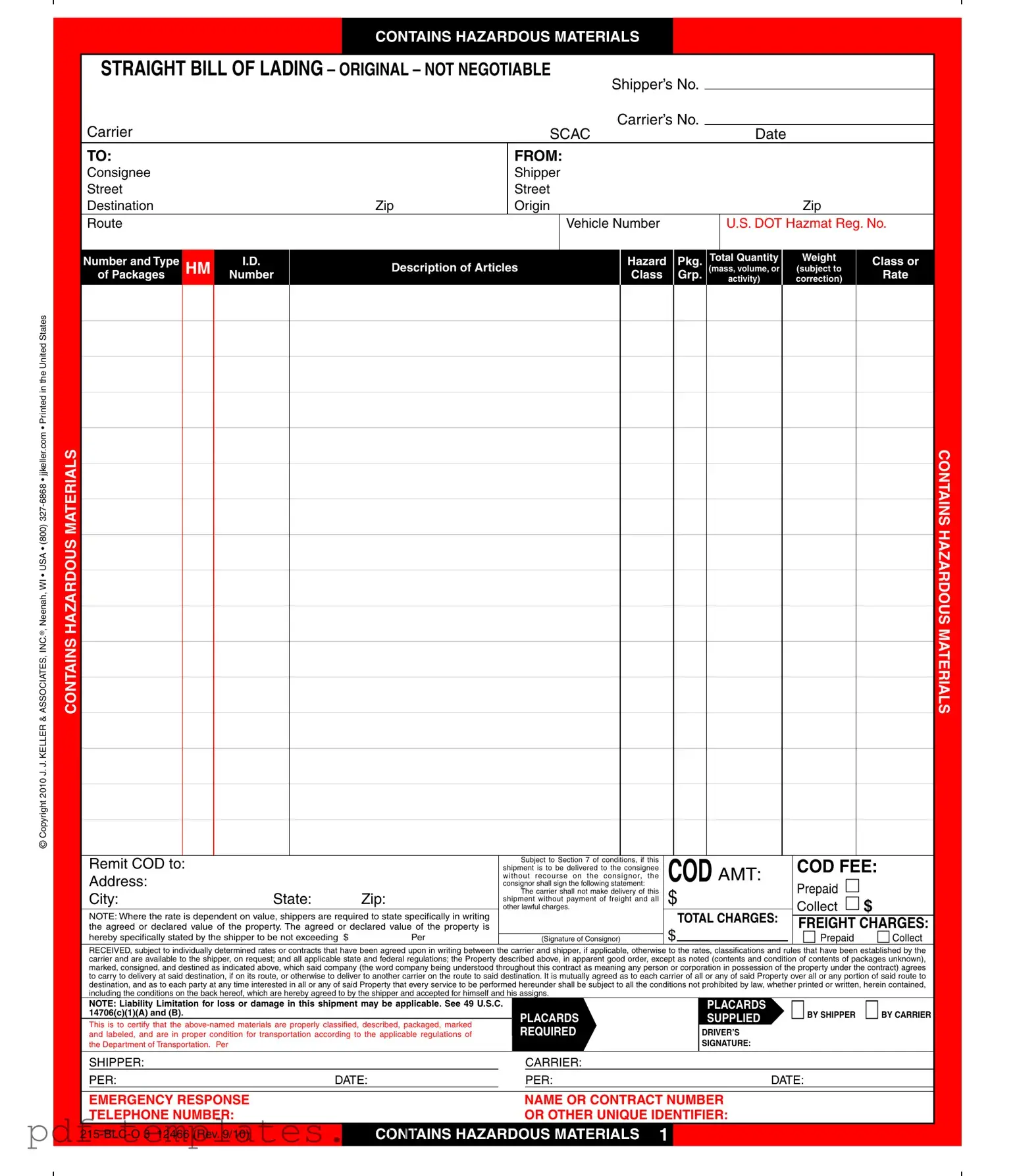The Hazard Bill of Lading form shares similarities with the standard Bill of Lading, which serves as a receipt for goods and a contract between the shipper and carrier. Both documents detail the terms of transportation, including the description of goods, shipping instructions, and liability clauses. However, the Hazard Bill of Lading specifically addresses hazardous materials, requiring additional information about safety and compliance with regulations. This added layer of detail is crucial for ensuring the safe handling and transport of dangerous goods.
Another document similar to the Hazard Bill of Lading is the Freight Bill. While the Freight Bill primarily outlines the charges associated with the shipment, it also serves as proof of the transaction between the shipper and the carrier. Like the Hazard Bill, it requires accurate information about the shipment, including weight and destination. However, it lacks the specific regulations and safety requirements that apply to hazardous materials, making the Hazard Bill more complex in nature.
To facilitate the sale of firearms in Texas, you can find valuable insight in our guide on the essential aspects of the Firearm Bill of Sale. For more details, visit our comprehensive guide on the Firearm Bill of Sale.
The Shipping Manifest is another related document that lists all the items being shipped. It serves as a comprehensive inventory, detailing each item’s description, quantity, and destination. Similar to the Hazard Bill of Lading, the Shipping Manifest is essential for tracking shipments. However, it does not specifically address the handling of hazardous materials, which the Hazard Bill explicitly outlines, thus ensuring compliance with safety regulations.
The Air Waybill is a document used in air freight that functions similarly to a Bill of Lading. It serves as a contract between the shipper and the airline, providing details about the shipment. While both documents include information about the goods and shipping terms, the Hazard Bill of Lading includes additional stipulations regarding hazardous materials, ensuring that all safety protocols are followed during air transport.
In the realm of international shipping, the Dangerous Goods Declaration is another document that parallels the Hazard Bill of Lading. This declaration is required for the transport of hazardous materials and outlines the nature of the goods, including their classification and handling requirements. Like the Hazard Bill, it ensures compliance with safety regulations. However, the Dangerous Goods Declaration is more focused on the specifics of the materials being shipped, while the Hazard Bill of Lading encompasses broader shipping terms.
The Certificate of Origin is a document that certifies the country of origin of the goods being shipped. While it does not directly relate to hazardous materials, it is often required alongside shipping documents, including the Hazard Bill of Lading. Both documents ensure compliance with trade regulations, but the Certificate of Origin does not address the specific safety requirements associated with hazardous materials.
The Packing List is another document that complements the Hazard Bill of Lading. It provides a detailed account of the contents of each package being shipped, including weights and dimensions. While both documents are crucial for the shipping process, the Packing List does not include the safety measures and regulations that the Hazard Bill mandates for hazardous materials, making the latter more specialized.
The Export Declaration is a document required for shipments leaving the country. It provides information about the goods being exported, including their value and destination. While it shares some similarities with the Hazard Bill of Lading in terms of required details, the Export Declaration does not specifically address the handling of hazardous materials, which is a critical aspect of the Hazard Bill.
The Customs Invoice is another document that plays a role in international shipping. It provides information about the shipment for customs purposes, including the value and description of goods. While it is essential for clearing customs, it does not encompass the safety regulations and handling procedures that are outlined in the Hazard Bill of Lading for hazardous materials.
Lastly, the Delivery Receipt is a document signed upon receipt of goods, confirming their delivery. While it serves as proof of delivery, it does not contain the detailed information or safety requirements found in the Hazard Bill of Lading. The Hazard Bill is vital for ensuring that hazardous materials are transported safely and in compliance with all regulations, whereas the Delivery Receipt is a more straightforward acknowledgment of receipt.
